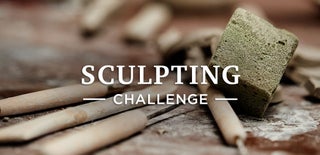Introduction: Sculpting a Miniature Knight Out of Air Drying Clay
Sculpting and painting a miniature knight.
Supplies
Wire for armature
Some clay (I used Darwi Classic air drying clay)
Tools (I used a couple of wooden modeling tools and a knife)
Acrylic paints, brushes, undercoating
Step 1: Inspiration
Look for some illustrations of characters you are going to model. For example if you would like to create a knight of specific historical period and specific country, you have to know how typical clothing, armours, and weapons look like. Moreover, it would help you to paint the model.
Step 2: Making an Armature
You may make some simple models without any armature, but there are two reasons to use it. First, it makes our model more solid and easy to deal with details. Second, it guarantees correct anatomy proportions. Just google “extended armature diagram” and print one that you like. I suggest using some standard scale for miniatures (like 54mm or 72mm).
Print the diagram and shape a wire to fit it. I make small wire loops to mark joints. Note: you’ll need some extra wire beneath foot joints to secure your model to the stand.
Step 3: Posing
Bend the wire skeleton in the joints to pose it naturally. You may refer to your prototype illustrations.
Step 4: Cementing the Armature
Cover your armature with clay and wait until it becomes solid.
Step 5: Stand Attaching
Now you may form some stand and attach it to the skeleton. Just stick feet into soft clay. That is why you needed to short wire stubs beneath feet. Make sure feet joints are on the surface of the stand. Wait until it harden. Note: actually you may carry out this step later if it’s more comfortable for you to work on some details without stand. It depends on model size and pose.
Step 6: Applying Clay Layers
I use layer-by-layer technique. This sort of clay is easy to apply to already solid clay layer. So you may work on new details without affecting previous. Of course, it takes some time while the layer becomes solid.
Step 7: Mail
Pierce small dots to simulate mail texture.
Step 8: Sword and Shield
You may use match or toothpick for sword armature. Carve the form and length you need. Use the same idea for the sheath. Flatten a piece of clay for the shield and cut it with knife. Attach these details when your miniature is almost ready. Finally, make hands and fingers.
Step 9: Final Strokes
With your wet finger make the surface smooth. You may also cut minor defects with knife even when your model is solid.
Step 10: Undercoating
Put some primer on your sculpture. You may do it two times just in case you missed some minor details.
Step 11: Rough Painting
I user acrylic Polycolor paints but any acrylic paints would work well. First, paint large areas and details. Don’t worry about minor faults here. We’ll fix them later. Wait until paint becomes dry.
Step 12: Paint Details
Use the tiniest brush you have and sharpened sticks to paint small details.
Step 13: Shadows
Make thin, almost transparent mixture with black paint and water. Apply it to places where you need shadows. It would fill small holes and make them darker without spoiling main color. For example, mail would look pretty much metallic.
Step 14: Gather Your Army :)

Participated in the
Sculpting Challenge










